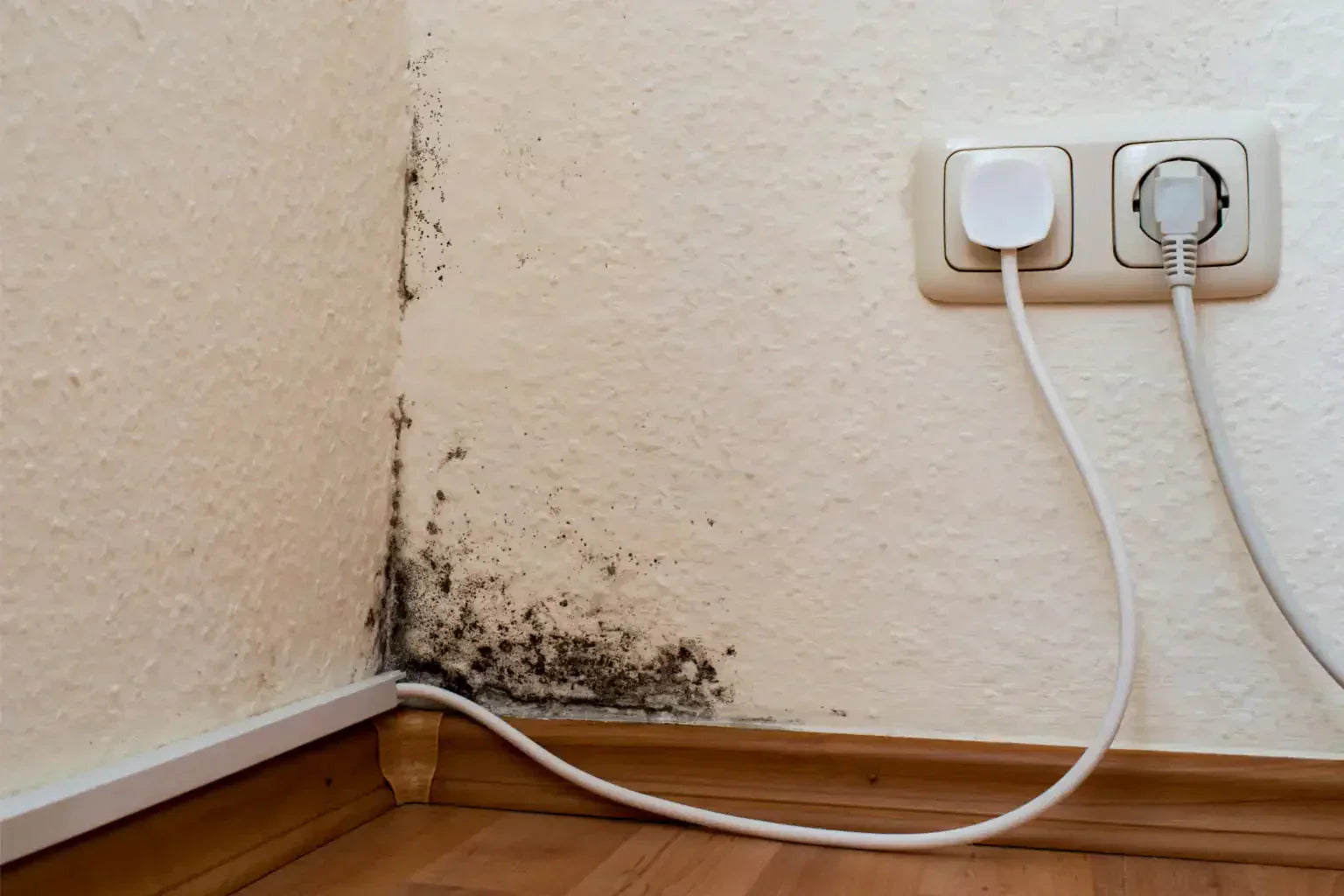“EMFs and mold are a daunting duo that can do a serious number on your body.“ – Dr. Jill C. Carnahan, MD, ABIHM, IFMCP
Table of contents
In our modern world, invisible forces envelop us. Some are vital, but others are potentially harming our health and well-being. While these forces are integral to our daily lives, their effects on us can be unpredictable. Among these, exposure to mold and electromagnetic fields (EMF) have garnered increasing attention in recent years for their potential impacts on human health and the environment. These phenomena stand out due to their significant implications for both health and environmental well-being.
The Link Between Mold and EMF
Mold, a type of fungus, is found everywhere in our environment, thriving in damp and humid conditions. While it plays a crucial role in nature by breaking down organic matter, indoor mold growth can pose serious health risks to occupants. Exposure to mold spores, mycotoxins , and volatile organic compounds (VOCs) can result in various health problems:
-
Respiratory issues
-
Allergic reactions
-
Neurological symptoms
Research indicates that indoor mold growth often stems from moisture issues in buildings, such as water leaks or poor ventilation. High humidity levels also contribute to mold growth indoors. However, there is growing evidence to suggest that electromagnetic fields may also play a role in mold proliferation.
The Influence of EMF
If you’ve been around here for a while, you’ve probably heard us talk a lot about EMFs (electromagnetic fields). But in case you’re new around here, let’s review!
Electromagnetic fields are invisible waves generated by various sources, including electrical wiring, appliances, wireless devices, and power lines. While EMF is a natural part of the environment, the exponential increase in human-made sources has raised concerns about potential health effects.
Several studies have investigated the effects of EMF on biological systems , revealing links to health conditions both minor and severe:
-
Fatigue
-
Difficulty concentrating
-
Sleep issues
-
Neurological disorders
-
Reproductive Issues
-
Cancer
Additionally, some research suggests that EMF exposure may alter the behavior and growth patterns of microorganisms, including mold .
Connecting the Dots
The relationship between mold and EMF has been increasingly researched in recent years. One hypothesis suggests that EMF exposure can create conditions that are conducive to mold growth by disrupting the balance of microbial communities in indoor environments.
A study published in the journal Environmental Science and Pollution Research found exposure to electromagnetic radiation caused changes in soil microbial communities. These changes could potentially impact the growth of mold and other fungi. Similarly, a study conducted by researchers at the University of Eastern Finland found that electromagnetic fields emitted by electronic devices could enhance the growth of certain types of mold.
Some experts even speculate that mold may act as a bioindicator for electromagnetic pollution, flourishing in areas with high EMF levels. This theory is supported by anecdotal reports of increased mold growth near power lines, electrical appliances, and Wi-Fi routers.
Implications for Health and Well-Being
The potential link between mold and EMF has significant implications for public health and environmental quality. If electromagnetic fields promote mold growth, it could exacerbate indoor air quality issues. It might even contribute to the prevalence of mold-related health problems.
Individuals sensitive to both mold and EMF may experience compounded health effects. This makes it challenging to identify and mitigate the underlying causes of their symptoms. As such, there is a pressing need for further research to better understand the complex interplay between these two phenomena.
Dr. Jill Carnahan, a renowned expert in the world of functional medicine, states, “As a living organism, mold can be highly sensitive to its environment. When mold is present in a space with high EMF levels, such as from routers or wireless devices, it can perceive this radiation as a threat and proliferate more rapidly.”
Practical Solutions and Mitigation Strategies
Considering the emerging evidence on mold and EMF links, here are steps to reduce exposure and mitigate potential health risks:
-
Improve Indoor Air Quality : Addressing moisture issues and maintaining proper ventilation can help prevent mold growth and improve overall indoor air quality. Using a high quality air purifier can also be helpful.
-
Reduce EMF Exposure : limit the use of wireless devices, keep devices away from sleeping areas, and use wired connections whenever possible.
-
Create EMF-Free Zones : Designate areas in your home or workplace where electromagnetic radiation is minimized.
-
Use EMF Protection Devices : Airestech devices have been tested and proven to protect against electromagnetic radiation. This layer of protection is especially important in areas where mold may be present.
Charting a Path Forward: Integrating Insights from Mold and EMF Research
The intertwining of mold and electromagnetic fields (EMF) poses a significant threat to human health and environmental stability, demanding urgent attention and action. The correlation between these phenomena reveals alarming implications for indoor air quality and the well-being of individuals.
As research progresses, it becomes increasingly evident that EMF not only exacerbates mold growth but also amplifies its harmful effects on human health. It is imperative to recognize the severity of this issue and mobilize efforts to combat it effectively. By embracing evidence-based strategies and advocating for continued research, we can pave the way for healthier living spaces and safeguard the well-being of present and future generations.



